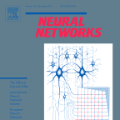For semantic segmentation, label probabilities are often uncalibrated as they are typically only the by-product of a segmentation task. Intersection over Union (IoU) and Dice score are often used as criteria for segmentation success, while metrics related to label probabilities are not often explored. However, probability calibration approaches have been studied, which match probability outputs with experimentally observed errors. These approaches mainly focus on classification tasks, but not on semantic segmentation. Thus, we propose a learning-based calibration method that focuses on multi-label semantic segmentation. Specifically, we adopt a convolutional neural network to predict local temperature values for probability calibration. One advantage of our approach is that it does not change prediction accuracy, hence allowing for calibration as a post-processing step. Experiments on the COCO, CamVid, and LPBA40 datasets demonstrate improved calibration performance for a range of different metrics. We also demonstrate the good performance of our method for multi-atlas brain segmentation from magnetic resonance images.
翻译:对于语义分解,标签的概率往往没有校准,因为它们通常只是分解任务的副产品。交界点对Union(IOU)和Dice评分通常用作分解成功的标准,而与标签概率有关的指标则不经常加以探讨。但是,对概率校准方法进行了研究,这些方法将概率产出与实验观察到的错误相匹配。这些方法主要侧重于分类任务,而不是语义分解。因此,我们建议一种基于学习的校准方法,侧重于多标签的语义分解。具体地说,我们采用了一个脉冲神经网络来预测概率校准的当地温度值。我们方法的一个优点是,它不会改变预测的准确性,从而允许校准作为后处理步骤。COCO、CamVid和LPBA40数据集的实验表明,不同指标的校准性表现得到了改进。我们还展示了我们从磁共振动图像中多分脑分解的方法的良好表现。




